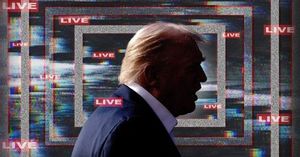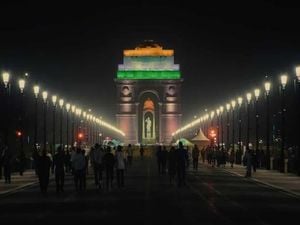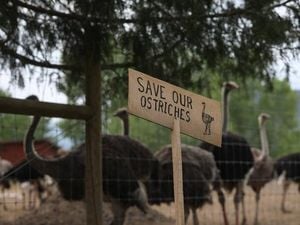For decades, Ladakh has stood as a symbol of India’s resilience and patriotism at the country’s northern frontier, its people living in relative peace amid the harsh Himalayan landscape. But in the wake of the 2019 abrogation of Article 370 and the region’s transformation into a Union Territory without legislative powers, Ladakh now finds itself in the throes of a political and constitutional crisis. Recent violent protests, resulting in the deaths of four people—including a Kargil war veteran—and over 80 injuries, have forced the nation to confront the delicate balance between the right to protest and the imperatives of national security in one of India’s most sensitive regions.
The roots of the current agitation stretch back to August 2019, when the Jammu and Kashmir Reorganisation Act split the erstwhile state into two Union Territories: Jammu & Kashmir, which retained a legislature, and Ladakh, which did not. According to The Leaflet, many in Ladakh initially welcomed this direct link to the Centre, hoping it would shield them from perceived neglect by Kashmir-based administrations. However, five years later, Ladakh’s lack of a legislative assembly, local law-making authority, or constitutional safeguards for land, jobs, and culture has left its people feeling voiceless and vulnerable. Decisions affecting the region are now made by unelected bureaucrats under the Lieutenant Governor, invoking Article 239 of the Constitution—a situation that constitutional scholars describe as a “democratic deficit.”
At the heart of Ladakh’s protests are two principal demands: full statehood and inclusion under the Sixth Schedule of the Indian Constitution. Statehood is seen as essential for genuine political representation and self-governance, while the Sixth Schedule offers cultural and economic safeguards that ordinary law cannot guarantee. The Schedule, which currently applies to tribal-majority areas in Assam, Meghalaya, Tripura, and Mizoram, provides for the creation of Autonomous District Councils (ADCs) with legislative, financial, and judicial authority. These councils can make laws on land, forests, agriculture, and local customs, with powers that can override state law unless the Governor intervenes. For Ladakh, where 97 percent of the population qualifies as Scheduled Tribes (as noted by the National Commission for Scheduled Tribes in 2019), inclusion under the Sixth Schedule is viewed as a constitutional shield protecting their land, culture, and economic interests from potential displacement.
Despite these aspirations, the Centre has yet to implement the NCST’s recommendation for Sixth Schedule inclusion. Frustration has mounted as Ladakhis have, for five years, pursued their demands through peaceful sit-ins, memorandums, and appeals to the government—efforts that have gone largely unheeded. In October 2024, prominent activist Sonam Wangchuk led the Delhi Chalo Padyatra, a foot march to the capital with around 100 volunteers under the Leh Apex Body banner, to highlight issues of land rights and constitutional safeguards. Wangchuk and others were detained by Delhi Police for violating prohibitory orders on assembly. Undeterred, Ladakhis launched a hunger strike in Leh on September 10, 2025, but when even this failed to elicit a meaningful response, frustration finally spilled over into violence on September 24, 2025, in Leh and Kargil.
The escalation was marked by stone-pelting, arson, and police firing. According to Law Chakra, the violent clashes left four dead and over 80 injured, making it the most serious unrest in Ladakh since the early 1990s. The tragedy has transformed what began as a constitutional assertion into a crisis of public frustration, with the Union government facing mounting pressure to address the region’s demands.
In the aftermath, authorities invoked the National Security Act (NSA)—a preventive detention law allowing for up to 12 months’ detention to protect national security or maintain public order—against Sonam Wangchuk, who had just ended his hunger strike. His NGO’s FCRA license was revoked due to alleged violations and “provocative” speeches referencing global youth movements, and a CBI probe was initiated into his HIMAL organization for alleged financial irregularities. Wangchuk’s wife, Gitanjali Angmo, has appealed to the Supreme Court, criticizing the government for targeting her husband in what she called a “politically motivated witch-hunt” and questioning the allegations linking him to Pakistan.
Despite the crackdown, Wangchuk has remained a voice for peace. In a heartfelt appeal following the violence, he urged young people to abandon violent methods: “We are watching our peaceful agitation failing because there is violence taking place. I request the youth of Ladakh to stop the violence forthwith. It does nothing to support Ladakh’s demands.” His words, reported in both Law Chakra and The Leaflet, underscore the tension between the right to protest and the need for public order in a region where national security concerns are paramount.
Opposition leaders, including Omar Abdullah and Mehbooba Mufti, have criticized the government’s handling of the protests, accusing it of ignoring the democratic aspirations of Ladakhis. Some BJP leaders, meanwhile, have blamed local Congress figures for instigating unrest. The Union Home Ministry stated that, except for earlier incidents, the situation was under control by 4 pm on the day of the violence and cautioned against the spread of inflammatory or outdated videos.
The legal and constitutional framework governing the right to protest is clear. Article 19 of the Indian Constitution guarantees the right to peaceful assembly and expression, but this right is subject to reasonable restrictions in the interests of sovereignty, integrity, and national security. Indian courts have consistently upheld peaceful protest as essential to democracy (Mazdoor Kisan Shakti Sangathan v. Union of India, 2018), but also affirmed that demonstrations cannot obstruct essential services or compromise law and order, especially in sensitive border areas (Amit Sahni v. Commissioner of Police, 2020).
Yet, as The Leaflet points out, democracy is not a distraction from national security—it is its very foundation. Ladakh’s strategic location, sharing over 1,600 km of disputed borders with China and Pakistan, makes it a critical buffer for India’s sovereignty and defense. Since the Galwan Valley clashes in 2020, the area has seen heightened military deployment. Alienation in border communities, analysts warn, can weaken national resolve and provide openings for hostile powers.
The government has established a High-Power Committee under the Ministry of Home Affairs to engage with representatives from Leh and Kargil, but leaders such as Qamar Ali Akhoon of the Kargil Democratic Alliance and Thupstan Chhewang of the Leh Apex Body argue that talks have produced “only assurances, no commitments.” Policy ambivalence, they say, has eroded trust, with Ladakh’s case for statehood and Sixth Schedule inclusion rooted not in secessionism but in the desire for security within India’s constitutional framework.
There are clear constitutional pathways available: inclusion in the Sixth Schedule can be achieved via Presidential Notification, a legislature could be created under Article 239A (as in Puducherry), and full statehood can be granted through parliamentary legislation under Articles 3 and 4. None of these options requires a constitutional amendment—only political will and dialogue.
Ladakh’s agitation is not a law-and-order problem, but a constitutional one. Its people are appealing to the spirit of the Constitution—federal justice, cultural dignity, and democratic participation. The longer the silence persists, the greater the risk of radicalization. As the dust settles from the latest round of protests, the need for a sensitive, inclusive, and constitutionally grounded solution has never been more urgent.




